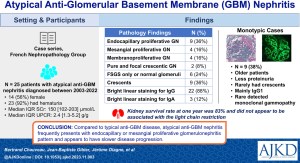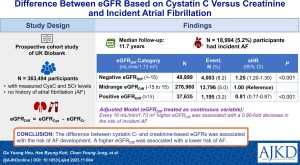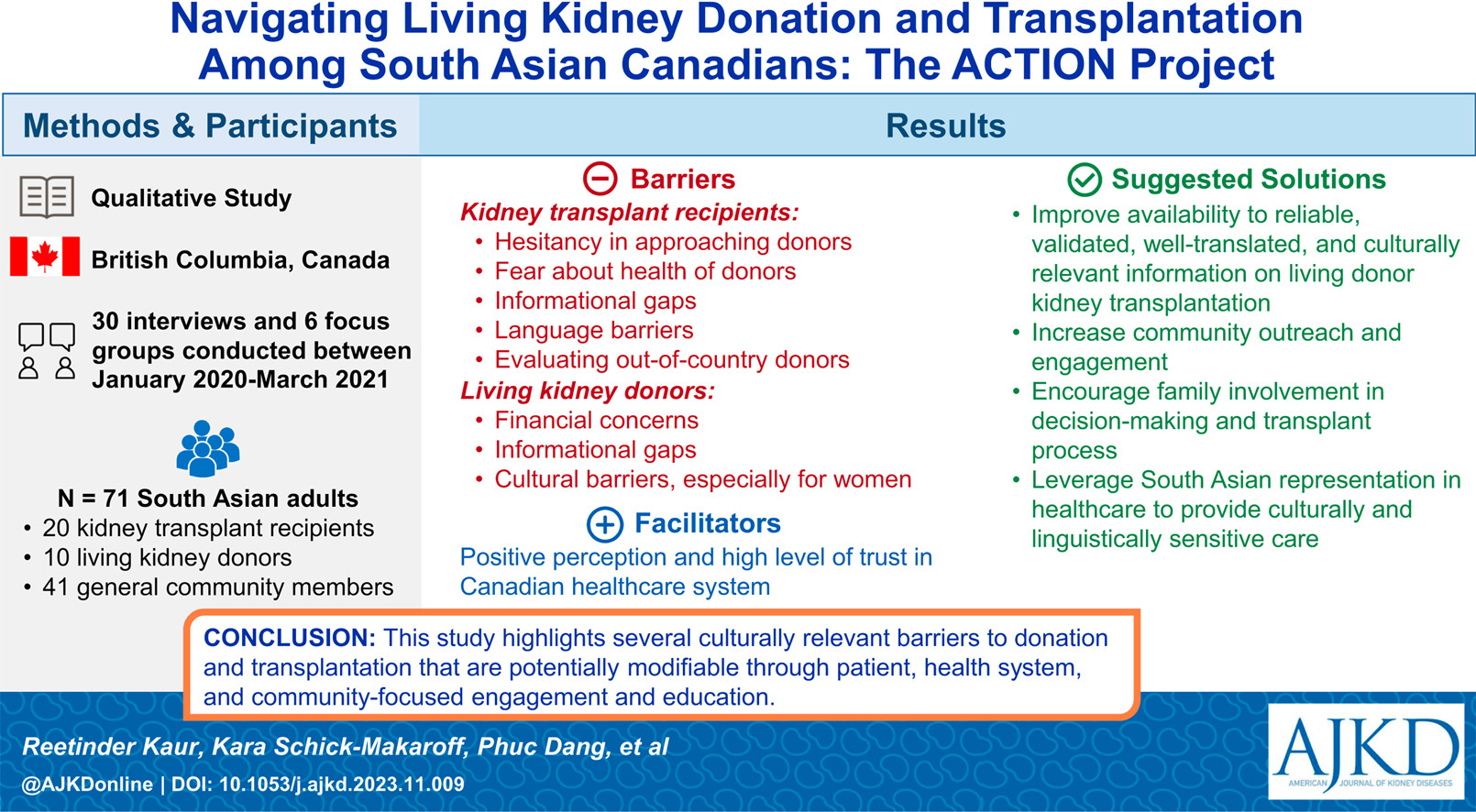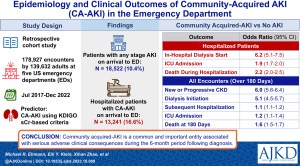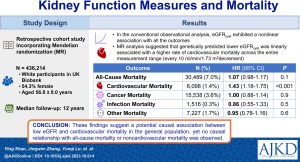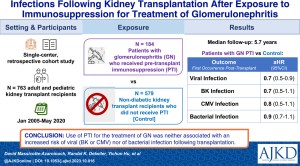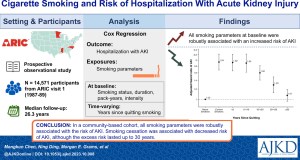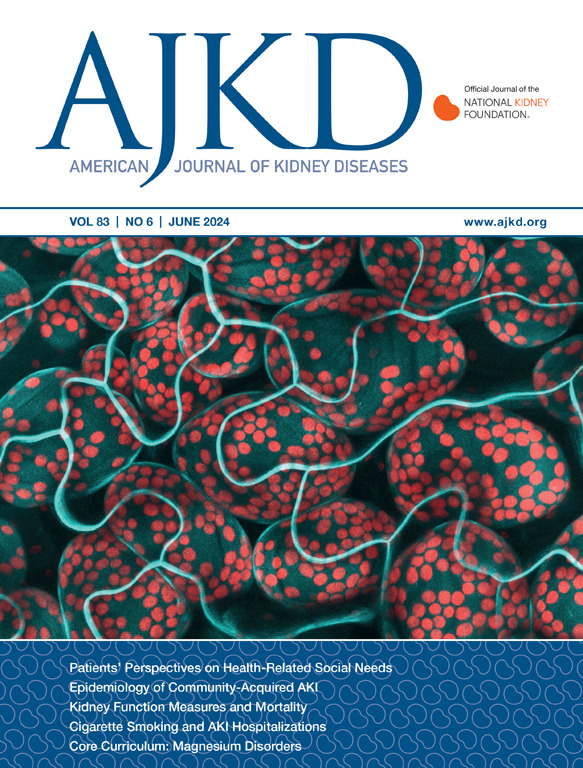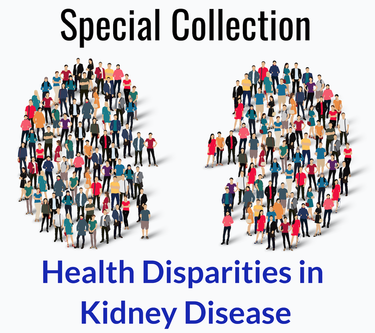Editor’s Note: We asked authors of Original Investigations to provide short plain-language summaries that would briefly summarize what inspired their study, the basic approach taken, what was learned, and why it matters. We hope our readers will find this valuable in helping them keep up with the latest research in the field of nephrology.
Highlights from the June 2024 issue:
Atypical Anti-Glomerular Basement Membrane Nephritis: A Case Series From the French Nephropathology Group by Bertrand Chauveau et al
From the authors: Atypical anti-glomerular basement membrane (GBM) nephritis is characterized histologically by bright linear immunoglobulin staining along the GBM without diffuse crescentic glomerulonephritis or circulating anti-GBM antibodies. We report a case series of 25 atypical cases of anti-GBM nephritis in collaboration with the French Nephropathology Group. Compared with typical anti-GBM disease, we observed a slower disease progression. Patients frequently presented with heavy proteinuria and commonly had evidence of endocapillary or mesangial proliferative glomerulonephritis. About half of the patients displayed a monotypic immune staining pattern; they tended to be older, with less proteinuria, and commonly without glomerular crescents in biopsy specimens. No concomitant circulating monoclonal gammopathy was detected. Further studies are needed to fully characterize its pathophysiology and associated clinical outcomes.
DOI: 10.1053/j.ajkd.2023.11.003
Difference Between Estimated GFR Based on Cystatin C Versus Creatinine and Incident Atrial Fibrillation: A Cohort Study of the UK Biobank by Ga Young Heo et al
From the authors: The difference between cystatin C–based estimated glomerular filtration rate (eGFR) and creatinine-based eGFR has recently gained attention as a potential indicator of cardiovascular outcomes influenced by factors other than kidney function. This study investigated the association between the differences in 2 eGFRs (cystatin C–based eGFR minus creatinine-based eGFR) and incident atrial fibrillation (AF) among >340,000 participants from the UK Biobank Study. Compared with those with a near zero eGFR difference, participants with a negative eGFR difference had a higher risk of AF, while those with a positive eGFR difference had a lower risk. These findings suggest that measuring eGFR differences may help identify individuals at a higher risk of developing AF.
DOI: 10.1053/j.ajkd.2023.11.004
EDITORIAL: Difference Between Estimated GFR Based on Cystatin C Versus Creatinine and Incident Atrial Fibrillation: A New Instrument on the Horizon to Improve Risk Assessment in This High-Risk Population? by Veronica T. Costa e Silva et al [FREE]
Patients’ Perspectives on Health-Related Social Needs and Recommendations for Interventions: A Qualitative Study by Tessa K. Novick et al [FREE temporarily]
From the authors: People receiving dialysis often experience health-related social needs, such as food and housing needs, but little is known about how these impact patients’ health and well-being or how to best address them. We interviewed people receiving dialysis about how health-related social needs affect them and what they think dialysis facilities can do to help them address those needs. The participants reported that they often lose their independence after starting dialysis and health-related social needs are common, exacerbate their stress and emotional distress, and reduce their sense of well-being. Dialysis facilities may be able to enhance the experience of these patients by facilitating connections with local resources and providing opportunities for patients to support one another.
DOI: 10.1053/j.ajkd.2023.11.005
EDITORIAL: The Dialysis Social Worker: Patients’ Best Defense to Meet Health-Related Social Needs by Megan Urbanski et al [FREE]
Navigating Living Kidney Donation and Transplantation Among South Asian Canadians: The ACTION Project by Reetinder Kaur and Kara Schick-Makaroff et al
From the authors: Our findings confirm that barriers to living kidney donation and transplant, such as hesitation in asking for a kidney, a lack of knowledge about donation and transplantation, and concerns about safety and the long-term impacts of living kidney donation, may be further heightened in the SA community, particularly among women and elderly people.
DOI: 10.1053/j.ajkd.2023.11.009
EDITORIAL Unraveling Barriers in Access to Living Donor Kidney Transplantation for South Asian Canadian Populations by Amy D. Waterman et al [FREE]
Epidemiology and Clinical Outcomes of Community-Acquired Acute Kidney Injury in the Emergency Department: A Multisite Retrospective Cohort Study by Michael R. Ehmann et al
From the authors: Acute kidney injury (AKI) is a condition characterized by a rapid decline in kidney function. There are many causes of AKI, but few studies have examined how often AKI is already present when patients first arrive to an emergency department seeking medical attention for any reason. We analyzed approximately 175,000 visits to Johns Hopkins emergency departments and found that AKI is common on presentation to the emergency department and that patients with AKI have increased risks of hospitalization, intensive care unit admission, development of chronic kidney disease, requirement of dialysis, and death in the first 6 months after diagnosis. AKI is an important condition for health care professionals to recognize and is associated with serious adverse outcomes.
DOI: 10.1053/j.ajkd.2023.10.009
Kidney Function Measures and Mortality: A Mendelian Randomization Study by Ying Shan et al [OPEN ACCESS]
From the authors: This study investigated the existence of a causal relationship between lower kidney function and death of different causes. Using data from 436,214 people in the United Kingdom, we applied conventional statistical analyses and those incorporating genetic data to implement Mendelian randomization, an approach that estimates causal associations. The observational analysis showed a nonlinear association between kidney function and various types of mortality outcomes. However, Mendelian randomization analysis suggested a linear increase in the risk of cardiovascular mortality with lower kidney function, but no causal link between the level of kidney function and all-cause or noncardiovascular mortality was identified. Managing kidney health may help reduce cardiovascular mortality, but caution is needed in interpreting the magnitudes of these results. Further validation in other populations and in those with advanced kidney failure is needed.
DOI: 10.1053/j.ajkd.2023.10.014
Infections Following Kidney Transplantation After Exposure to Immunosuppression for Treatment of Glomerulonephritis by David Massicotte-Azarniouch et al [OPEN ACCESS]
From the authors: Many kidney transplant patients have glomerular disease as the cause of kidney failure. These patients may be exposed to immunosuppression before transplantation, which could increase the risk for infections after receipt of a transplanted kidney. We identified kidney transplant recipients at a university teaching hospital who received immunosuppression before transplant for the treatment of glomerular kidney disease. We examined their risk for infection after transplantation by comparing it with the risk among transplant patients who were not exposed to immunosuppression before transplant. We observed no increased risk for infection after exposure to prior immunosuppression. Therefore, patients exposed to significant amounts of immunosuppression before transplantation may not require special surveillance or medication adjustment for fear of infection after their receipt of a kidney transplant.
DOI: 10.1053/j.ajkd.2023.10.016
Cigarette Smoking and Risk of Hospitalization With Acute Kidney Injury: The Atherosclerosis Risk in Communities (ARIC) Study by Mengkun Chen et al
From the authors: Smoking is a behavior that is associated with many negative health effects. It is not well understood how smoking relates to the occurrence of acute kidney injury (AKI) in the community. In this study, we looked at data from a group of 14,571 adults who were followed for 26 years to see how different aspects of smoking (such as whether someone smoked, how long they smoked for, how many cigarettes they smoked per day, and whether they quit smoking) were related to AKI. We found that smoking was strongly linked to an increased risk of AKI. This risk decreased after 5-10 years of quitting smoking, but the excess risk lasted up to 30 years. This study shows the importance of preventing people from starting smoking and to encourage smokers to quit to reduce their risk of AKI.
DOI: 10.1053/j.ajkd.2023.10.008
Perspective the June 2024 issue:
Tips for Testing Adults With Suspected Genetic Kidney Disease by Judy Savige
Genetic kidney disease is common but often unrecognized. It accounts for most cystic kidney diseases and tubulopathies, many forms of congenital abnormalities of the kidney and urinary tract (CAKUT), and some glomerulopathies. Genetic kidney disease is typically suspected where the disease usually has a genetic basis or there is another affected family member, a young age at onset, or extrarenal involvement, but there are also many exceptions to these “rules”. Genetic testing requires the patient’s written informed consent. When a patient declines testing, another later conversation may be worthwhile. Genetic testing not only indicates the diagnosis but also the inheritance pattern, likely at-risk family members, disease in other organs, clinical course, and possibly effective treatments. Sometimes genetic testing does not identify a pathogenic variant even where other evidence is strong. A variant of uncertain significance (VUS) may be reported but should not be used for clinical decision making. It may be reclassified after more information becomes available without necessarily retesting the patient. Patients should be provided with a copy of their genetic test report, the results explained, and at-risk family members offered “cascade” testing. A referral to a clinical geneticist or genetic counselor helps identify affected family members and in providing advice to assist with reproductive decisions.
DOI: 10.1053/j.ajkd.2023.10.011
The cover image features Arabidopsis thaliana plant cells containing chloroplasts, the site of photosynthesis for green plants and algae. Magnesium is the central ion of chlorophyll, a cofactor for photosynthetic enzymes. Plants deficient in magnesium will show retarded growth. The Core Curriculum in this month’s issue discusses magnesium disorders and the importance of this ion for human health.
The image “Arabidopsis thaliana plant cells containing chloroplasts, LM.” by Ferna´n Federici is from the Wellcome Collection, available under the CC BY 4.0 license. Special thanks to Editorial Intern Emmanuel Adomako for curating the cover image and drafting the cover blurb for this issue.
SPECIAL COLLECTION: HEALTH DISPARITIES
The articles in this special collection highlight various types of disparities that impact patients with kidney diseases.
- The Renal Warrior Project. Join Now
- Source: https://ajkdblog.org/2024/06/03/highlights-from-the-june-2024-issue/

